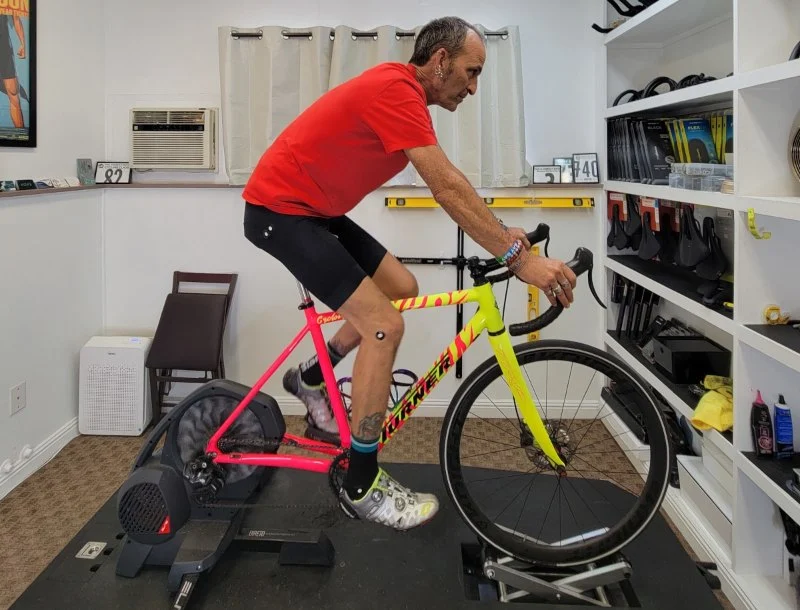
- 1. What is a Bike Fit?
- 2. Why Is Bike Fit Important?
- 3. Benefits of a Proper Bike Fit
- 4. The Bike Fitting Process
- 5. Is a Bike Fit Worth the Investment?
- 6. Conclusion
1. What is a Bike Fit?
A bike fit is the process of adjusting a bicycle to fit the rider’s unique body measurements, flexibility, riding style, and specific needs. A proper bike fit goes beyond simply adjusting the seat and handlebars; it involves aligning the bike components to ensure comfort, efficiency, and prevent injury during long rides. Getting a professional bike fitting means making sure your bike works for you, not against you.
2. Why Is Bike Fit Important?
Getting the right bike fit is essential for many reasons. First and foremost, it can significantly enhance your comfort while cycling. A poorly fitted bike can lead to discomfort, pain, and even long-term injury, particularly in areas like the knees, back, and wrists. Additionally, a proper fit allows for better energy transfer, increasing pedaling efficiency and helping you ride faster and longer without exhausting yourself.
3. Benefits of a Proper Bike Fit
There are numerous benefits to getting a bike fitting. These include:
- Improved Comfort: A customized fit helps to reduce discomfort during rides, preventing issues such as saddle soreness, neck strain, and wrist pain.
- Injury Prevention: Proper bike alignment ensures that your body moves efficiently, reducing stress on joints and muscles that could lead to injury.
- Increased Performance: With the right fit, you can ride faster and more efficiently. A proper fit enhances your pedaling technique, making each stroke count.
- Better Posture: A bike fit helps you adopt a natural, ergonomic riding posture, which can reduce fatigue and keep you riding comfortably for longer.
4. The Bike Fitting Process
The bike fitting process typically involves several steps to ensure that all parts of your bike are adjusted to your body. Here’s a general overview:
- Initial Assessment: The fitting starts with an evaluation of your body measurements, flexibility, and any past cycling injuries. This is to understand your riding style and any specific issues you may have.
- Bike Adjustments: The fitter adjusts key components such as the saddle height, handlebar position, and crank arm length. Custom footbeds or shoe adjustments may also be made for optimal comfort.
- Dynamic Fitting: Some bike fits include dynamic assessments, where you ride the bike while the fitter observes your movements. This helps fine-tune the fit for maximum comfort and performance.
- Final Adjustments: After riding, final tweaks are made to ensure that everything feels just right, from saddle angle to handlebar width.
5. Is a Bike Fit Worth the Investment?
Many riders wonder whether a bike fit is worth the cost. If you are an avid cyclist, especially one who spends several hours on the bike, the investment is absolutely worthwhile. The benefits of improved comfort, injury prevention, and enhanced performance far outweigh the initial cost. However, if you are a casual rider who only cycles occasionally, you might not need a professional fit, though basic adjustments can still improve your ride. For those looking to take their cycling seriously, a professional bike fit can be a game-changer.
6. Conclusion
In conclusion, a proper bike fit is one of the best investments you can make for your cycling journey. Not only does it help to improve your comfort and prevent injuries, but it also enhances your overall cycling performance. Whether you are a seasoned pro or a casual cyclist, having a bike tailored to your body will make every ride more enjoyable and efficient. So, next time you're preparing for a ride, consider getting a professional bike fitting to ensure you're maximizing your potential on two wheels.







 Billet BMX5.0 (2 reviews)
Billet BMX5.0 (2 reviews) Far East Children Bicycle Factory1.0 (1 reviews)
Far East Children Bicycle Factory1.0 (1 reviews) Archer Motorsports, Inc.4.0 (8 reviews)
Archer Motorsports, Inc.4.0 (8 reviews) YEP Bike Works4.0 (55 reviews)
YEP Bike Works4.0 (55 reviews) Gorham Bike & Ski4.0 (498 reviews)
Gorham Bike & Ski4.0 (498 reviews) Alchemy Bikes4.0 (37 reviews)
Alchemy Bikes4.0 (37 reviews) How to Teach Kids to Ride a Bike: A Step-by-Step Guide for Parents
How to Teach Kids to Ride a Bike: A Step-by-Step Guide for Parents Tips for Riding on Busy City Streets: Smart Strategies for Urban Cyclists
Tips for Riding on Busy City Streets: Smart Strategies for Urban Cyclists Best US National Parks for Mountain Biking: Ride Epic Trails Across America
Best US National Parks for Mountain Biking: Ride Epic Trails Across America Best Aero Helmets for Time Trials and Racing
Best Aero Helmets for Time Trials and Racing How to Clean and Lubricate Your Bike Chain Like a Pro
How to Clean and Lubricate Your Bike Chain Like a Pro 10 Must-Have Items for Long-Distance Cycling Trips
10 Must-Have Items for Long-Distance Cycling Trips